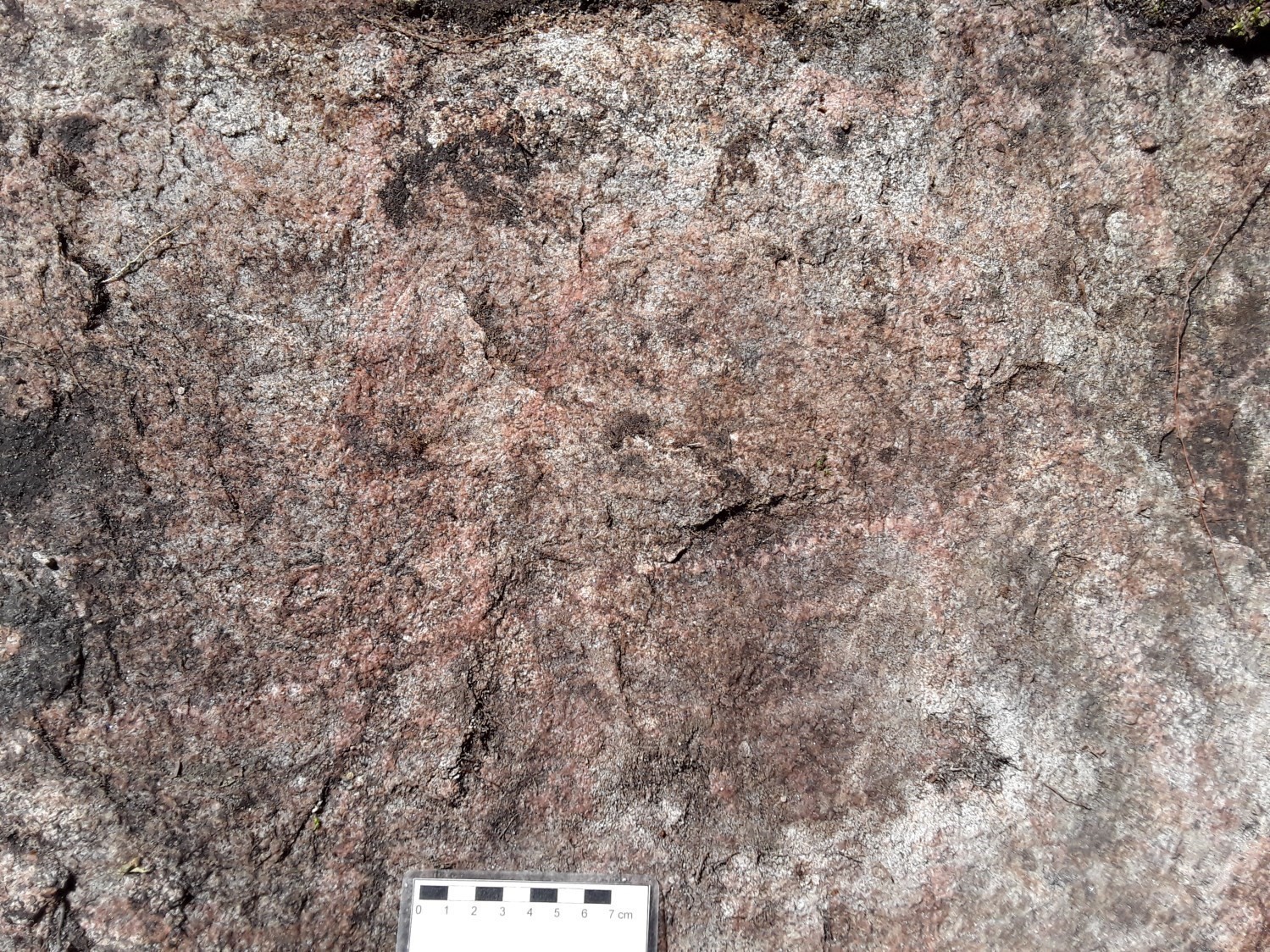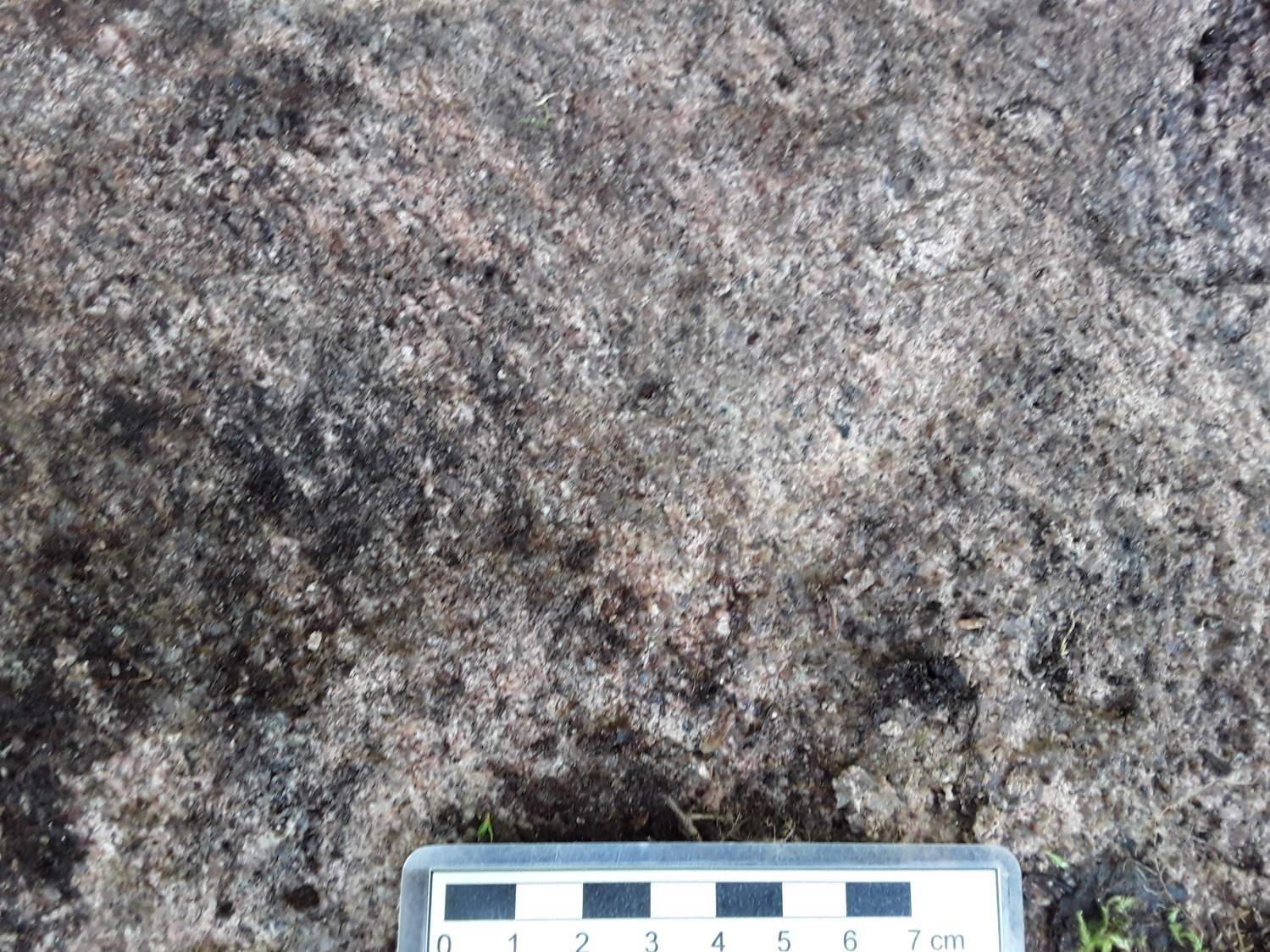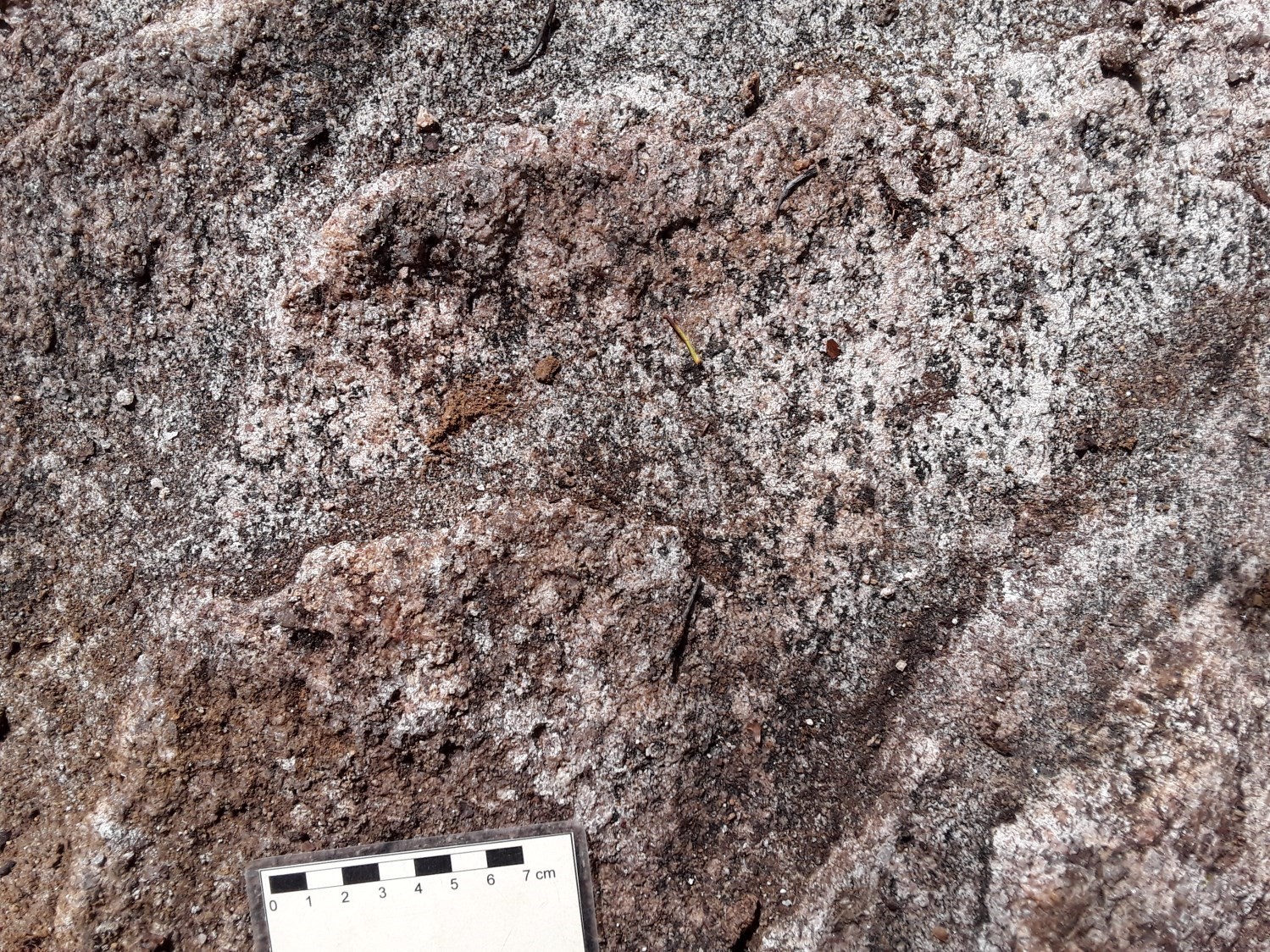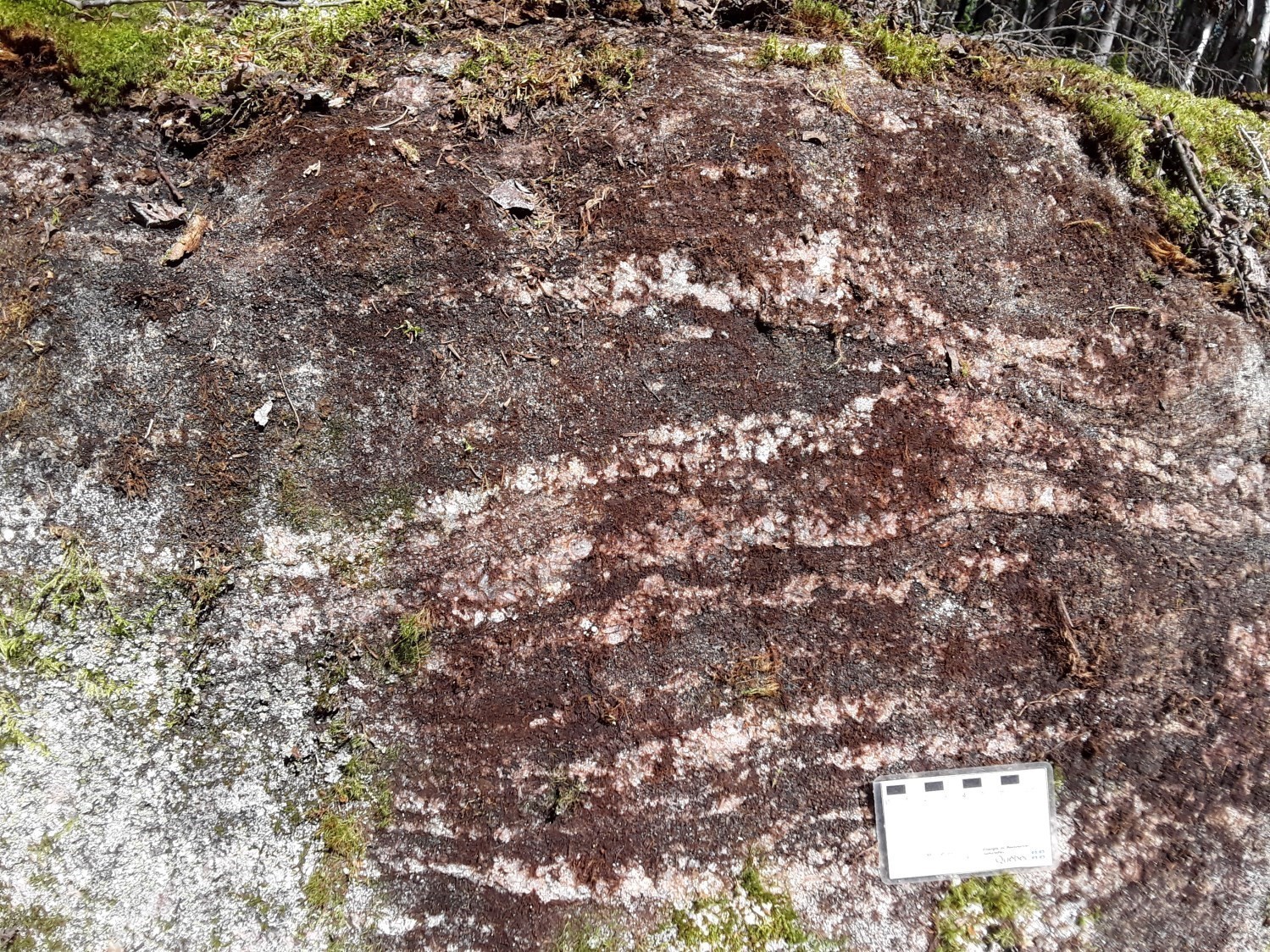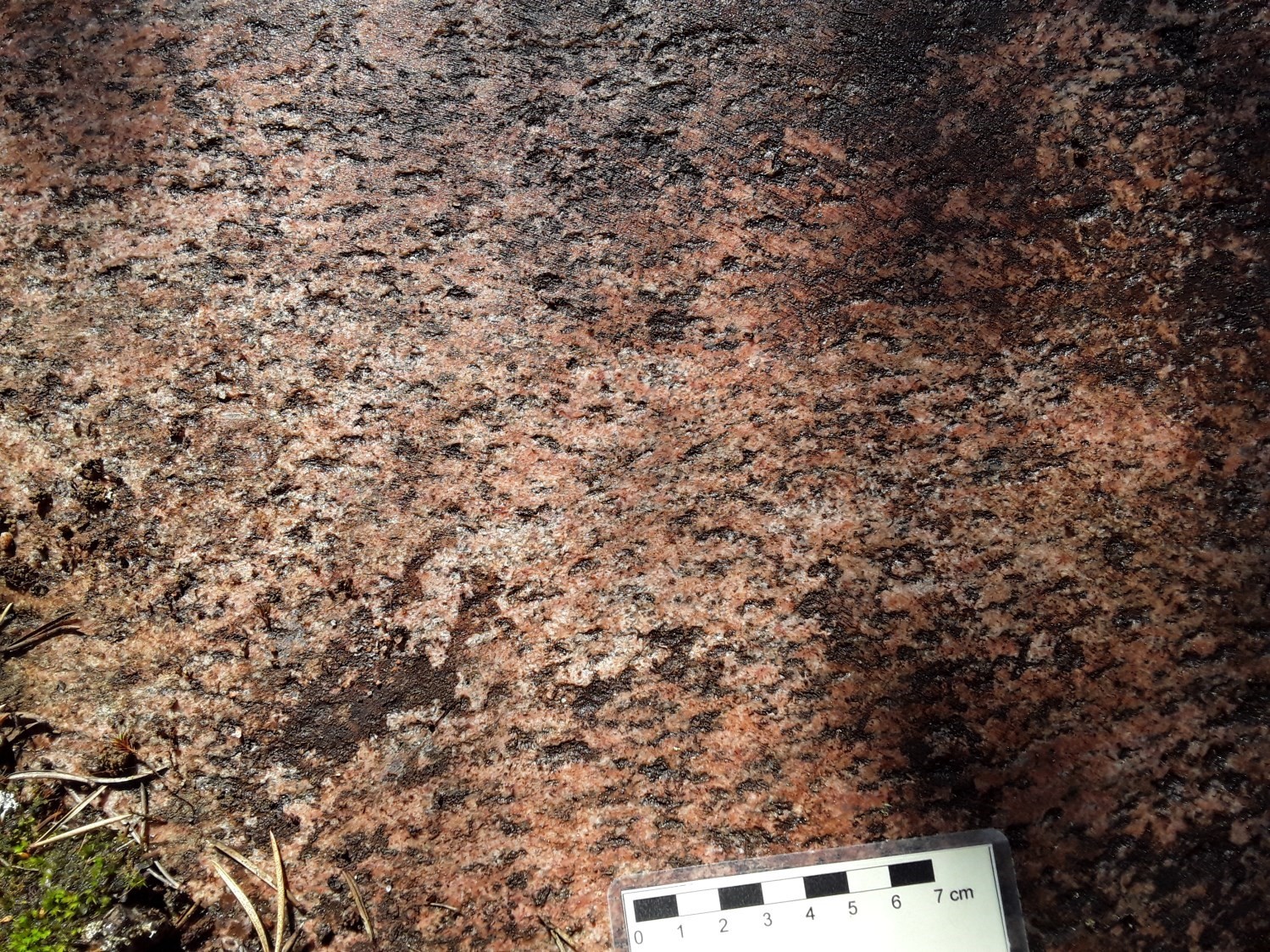
DISCLAIMER: This English version is translated from the original French. In case of any discrepancy, the French version shall prevail.
| Author(s): | Moukhsil and El Bourki, 2021 |
| Age: | Mesoproterozoic |
| Stratotype: | Reference outcrop 2020-FT-3101 (southern part of batholith) |
| Type area: | NE corner of NTS sheet 32H02 |
| Geological province: | Grenville Province |
| Geological subdivision: | Allochton |
| Lithology: | Felsic to intermediate intrusive rocks |
| Category: | Lithodemic |
| Rank: | Lithodeme |
| Status: | Formal |
| Use: | Active |
None
Background
The Coin Batholith was defined during mapping by Moukhsil and El Bourki (2021) conducted ~60 km NNW of Lake Saint-Jean. This unit consists of several phases divided into two intrusions well circumscribed from the aeromagnetic survey (Intissar and Benahmed, 2015).
Description
The Coin Batholith consists of two polyphase intrusions of quartz monzonite, locally containing hypersthene (mangerite), syenogranite, alkali feldspar granite and a minor amount of quartz monzodiorite. The whole is intruded by granite and granitic pegmatite dykes.
Quartz monzonite and hypersthene quartz monzonite (mangerite) is generally greyish in both altered surface and fresh exposure. It is characterized by a medium to coarse grain size and is slightly or not deformed. It is composed of large zones of quartz, K-feldspar, plagioclase, biotite, clinopyroxene, orthopyroxene, hornblende and magnetite. Clinopyroxene and orthopyroxene contents vary in outcrop (1-8%). When observed, orthopyroxene and hornblende are without exception associated and surrounded by magnetite. The quartz content is variable, and locally represents a little more than 20% of the rock, especially in outcrops where the rock is cut by whitish granite and pinkish granitic pegmatite veins and veinlets.
Syenogranite is pinkish to whitish in altered patina and pinkish in fresh exposure. It is fine to medium grained and contains K-feldspar, plagioclase, biotite and magnetite. A slight foliation marks this rock, but it can be massive locally.
Alkali feldspar granite is medium grained, pink in fresh exposure, greyish in altered patina, and is marked mainly by magmatic foliation. Indeed, in thin section, quartz forms large zones displaying a globular texture and no subgrains or stretching. Granite contains microcline having a texture reminiscent of the Scottish kilt, sericitized plagioclase, magnetite, small amounts of biotite altered to bluish chlorite, orthopyroxene and hornblende. Observed accessory minerals are epidote, apatite and zircon.
Quartz monzodiorite is fine to medium grained. The rock is composed of quartz, plagioclase, biotite, clinopyroxene, magnetite, traces of K-feldspar and, locally, some pyrite grains. The rock is less deformed and is cut by millimetric dykes of pinkish pegmatite of granitic to syenitic composition.
Thickness and distribution
The Coin Batholith is formed of two intrusions. The first is more or less elliptical in shape and covers an area of 4 km2. The second is more or less oval in shape and covers an area of ~28 km2. The latter, mapped in sheet 32H02, extends eastward into the NW corner of sheet 32H01 and continues northward into the SE and SW corners of sheets 32H07 and 32H08, respectively. The first intrusion is more concentrated in the northern part of sheet 32H02, ~3 km west of the second intrusion.
Dating
None.
Stratigraphic Relationship(s)
The Coin Batholith intrudes into paragneiss of the Barrois Complex. In turn, all phases of the batholith are cut by granite and granitic pegmatite dykes.
Paleontology
Does not apply.
References
Publications Available Through SIGÉOM Examine
INTISSAR, R., BENAHMED, S., 2015. Levé magnétique aéroporté dans le secteur ouest du Lac-St-Jean, Province de Grenville. MERN, GOLDAK AIRBORNE SURVEYS. DP 2015-06, 7 pages and 2 plans.
MOUKHSIL, A., EL BOURKI, M., 2021. Géologie de la région de Girardville, Province de Grenville, région du Saguenay – Lac-Saint-Jean, Québec, Canada. MERN. BG 2021-02, 1 plan.
Suggested Citation
Ministère de l’Énergie et des Ressources naturelles (MERN). Coin Batholith. Quebec Stratigraphic Lexicon. https://gq.mines.gouv.qc.ca/lexique-stratigraphique/province-de-grenville/batholite-du-coin_en [accessed on Day Month Year].
Contributors
|
First publication |
Abdelali Moukhsil, P. Geo., Ph.D. abdelali.moukhsil@mern.gouv.qc.ca; Mhamed El Bourki, GIT., M.Sc. mhamed.elbourki@mern.gouv.qc.ca (redaction) Mehdi A. Guemache, P. Geo., Ph.D. (coordination); Fabien Solgadi, P. Geo., Ph.D. (critical review); Simon Auclair, P. Geo., M.Sc. (editing); Céline Dupuis, P. Geo., Ph.D. (English version); André Tremblay (HTML editing). |



